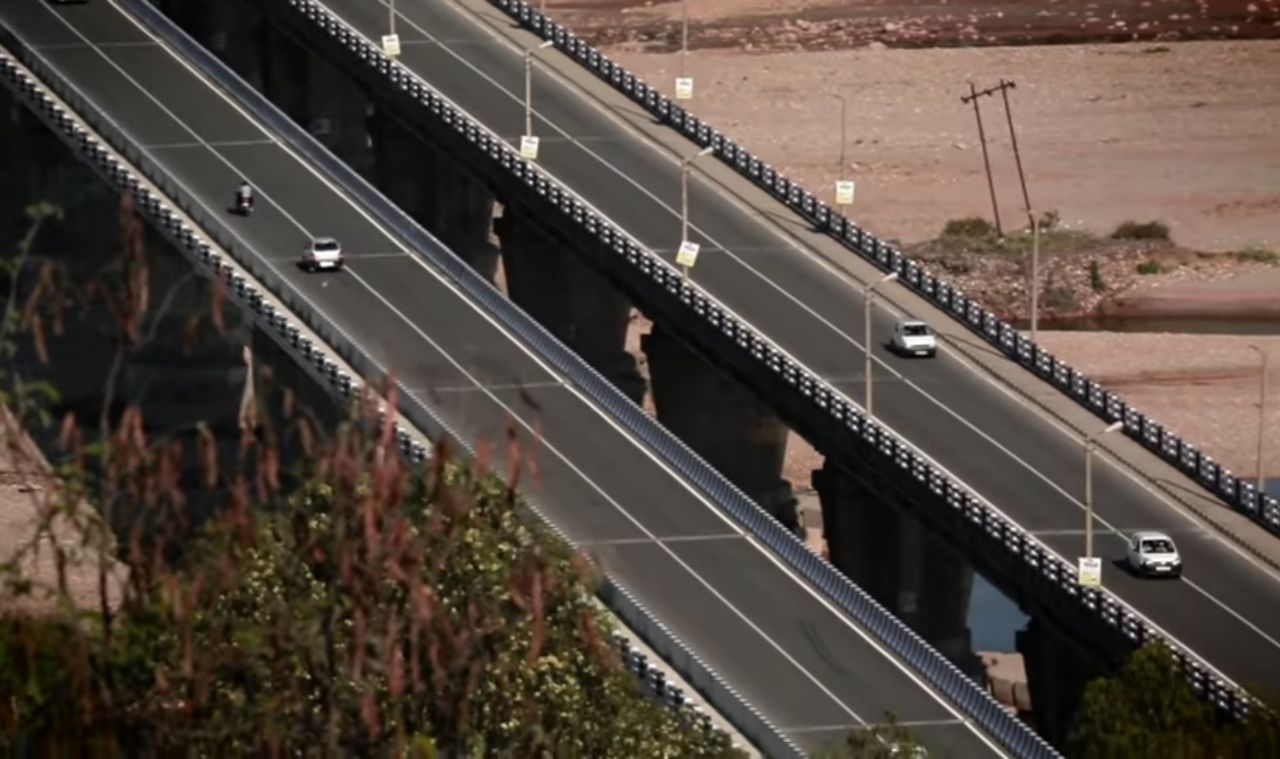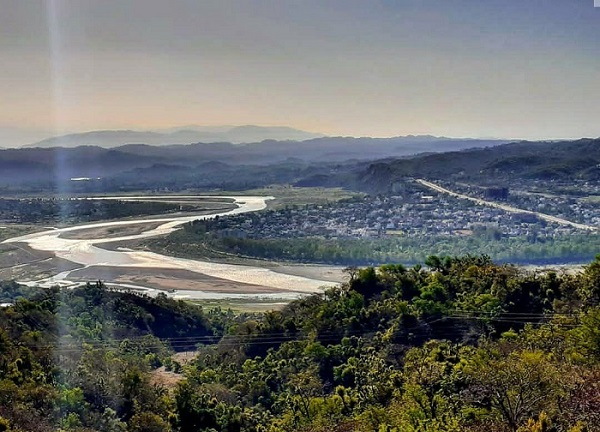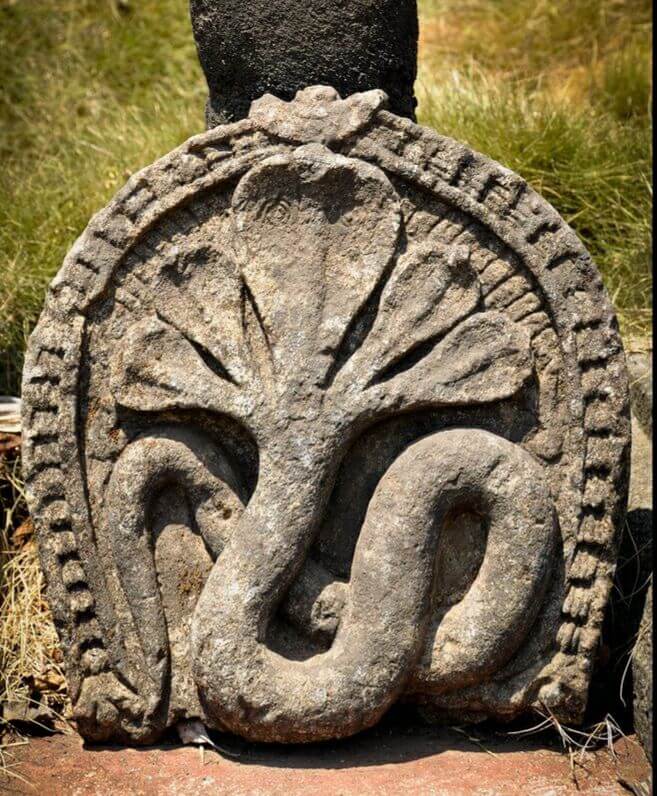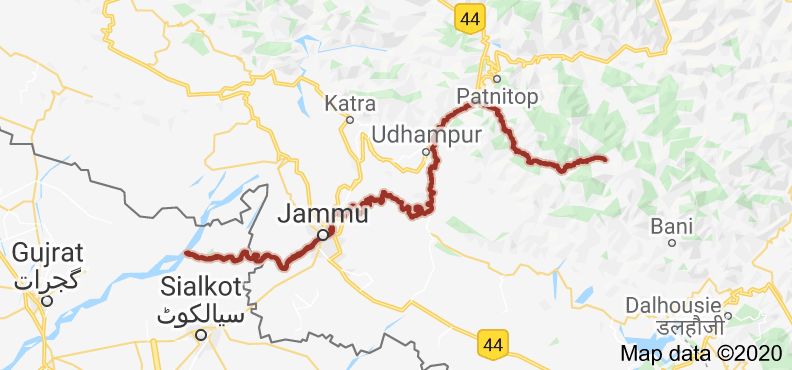River Tawi Jammu:
141 km long river Tawi is a left-bank tributary of river Chenab. It flows through Jammu city and one of the major rivers of Jammu and Kashmir.
River Tawi originates from the Kailash Kund Glacier which lies at the top of Mahakailash Choti in Bhaderwah, Doda district of Jammu region.
It originates in the form of a small stream and later gathers water from various streams (nullas) on the way.
These Streams locally known as nullas or Khads are of two types the perennial and the seasonal.
The perennial streams contribute water into river Tawi throughout the year while the seasonal ones are active only in the rainy season.
The most famous among them is the Jhajjar Nalla which has a very famous tourist place Jhajjar Kotli.
River Tawi has water throughout the year, however, the river usually reduces to a small stream in the winters and the summers while in the rainy season Tawi river floods are common.
The river initially followed by the mountainous terrain enters the plains in Jammu and then merges with the river Chenab in Pakistan.
The river is considered sacred by the Hindus like most of the other rivers in India. Various ceremonies are performed by the locals along the bank of river Tawi.
Tawi river flows through a small part of Doda, then enters into the Udhampur district followed by the Jammu district and ultimately merges with the river Chenab in Pakistan.
Tawi is one of the most important rivers of Jammu and Kashmir which nourishes the regions of Jammu and also provide water for the residents of Jammu city.
Tawi is also known as Suryaputri which means daughter of Sun.
The famous Railway Station of Jammu: 'Jammu Tawi' is also named after river Tawi.
Legends
Legends have it that the river Tawi was brought to Jammu by Raja Pher Devata to cure his father Vasuki Nag, the serpent king.
After which Phed Devta ji was declared as the Raja of Jammu with the blessings of Bawe wali Mata, the presiding deity in Jammu.
Jammu is a folklore treasure Click here to read more
There are various shrines on the bank of river Tawi although most popular of them is no doubt the Bawe wali Mata Temple at the Bank of river Tawi.
Tawi Bridges
 |
| Sidhra Bridge |
There are various bridges constructed over the river Tawi for better connectivity as Jammu city is situated on the left and right banks of river Tawi.
There are four main bridges over the river Tawi :
- Vikram Chowk Bridge
- Gujjar Nagar Bridge
- Bhagwati Nagar Bridge
- Sidhra Bridge
Also Read:
Projects
Various tourism initiatives led by the J&K government has been started to promote tourism in Jammu city.
Various parks built on the bank of river Tawi is appreciable by the government, recently Maharaja Hari Singh Park was thrown open for the public.
However, a major project on the bank of river Tawi for the construction of an artificial lake which will not only promote tourism in the state but also provide drinking water to the nearby areas has not been started till date.
Tawi River Floods
Floods in the Tawi river are very common in the rainy season. Tawi flows through the Jammu city which is the largest city in the Jammu region.
Often people living in the lower banks of the river have to vacate the area in the rainy seasons.
The movement of vehicles on the bridges over the river Tawi is also effected and sometimes restricted at the time of floods.
Tawi River Map
Tawi River Pollution
Various projects have been started by the Government of Jammu and Kashmir to develop the area of Tawi as a major tourist place in the city.
However, at the ground, various initiatives of the government seem to have no credibility as the river Tawi is polluted by the untreated sewage directed into the flowing water of the river.
Sand mining along the bank of the river Tawi also degrades the sanctity of this ancient cradle of civilization.
Rivers of Jammu and Kashmir
Jammu and Kashmir being the Northernmost part of India amidst the Himalayas is home to many water bodies which provides water to the local population of Jammu and Kashmir and other parts of the Indian Subcontinent.
These are the main rivers of Jammu and Kashmir:
- Tawi River (Suryaputri)
- Jhelum River (Veth, Veetesta)
- Chenab River (Chandrabhaga)
- Indus River (Sindhu)
- Poonch River
Conclusion
Tawi is the lifeline of the Jammu city, it is the primary source of water for the residents of Jammu and for the nearby towns as well.
There is a strong need to develop the infrastructure to intercept the sewage that is currently being discharged directly into the river.
The government should establish sewage treatment plants in order to treat the sewage before discharging it into the river basin.
River Tawi is considered sacred and it is the responsibility of the common residents of Jammu to restore Tawi to its past glory.
Frequently Asked Questions
Q. Which river flows through Jammu?
A. River Tawi flows through the Jammu city. Jammu city is situated on the bank of river Tawi. The old city of Jammu is on the right bank of river Tawi.
Q. How many rivers are there in Jammu and Kashmir?
A. There are many rivers in Jammu and Kashmir, most of them originate from the Himalayas. The main rivers of Jammu and Kashmir are Tawi, Jhelum, Chenab, Ravi, Indus, Poonch river, Galwan etc.
Q. Which river is known as Suryaputri?
A. River Tawi is known as Suryaputri which means the daughter of Sun.
Q. What is the old name of Jammu?
A. Jammu is named after the King Jambu Lochan. Jambu Lochan ruled Jammu in the 14th Century B.C.
Q. What is the origin of river Tawi?
A. River Tawi originates from the Kailash Kund Glacier in the Doda district of Jammu region in Jammu and Kashmir.
Q. What is the length of Tawi river?
A. The length of river Tawi is 141 Km.




Post a Comment